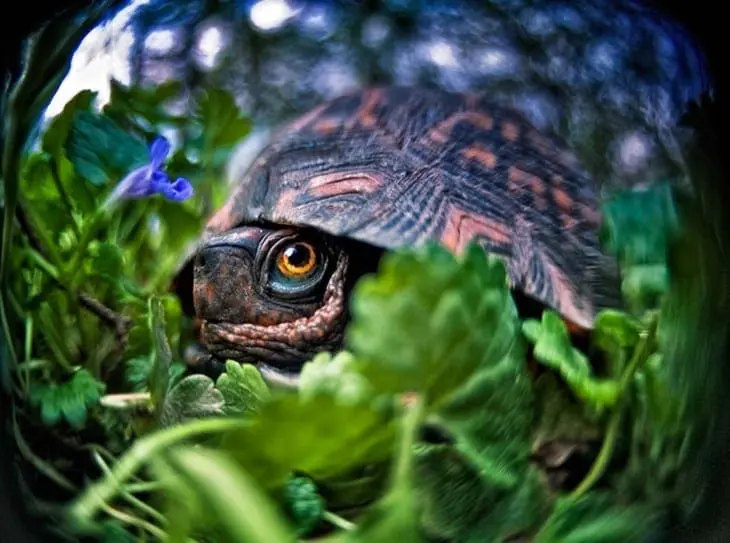Photographing Animals with a Lensbaby

Photographing Animals with a Wide Angle Lens or Lensbaby
text by John Bentham
Wide Apertures, Fast Lenses:
When shooting in low light the faster your lens (wider the aperture) the higher your shutter speed can be, which reduces the chance of camera shake and minimizes subject movement. With a faster lens you won’t need to raise the ISO as high, thus minimizing the digital noise you may get at very high ISO’s like 3200. With low light you’re better off with a full time f2.8 lens, or faster. The kit lenses supplied with most DSLR’s have limited capabilities. A kit lens will allow you to shoot at f3.5 if your zoom is set to it’s widest focal length (only 1/2 stop slower than 2.8). But when you zoom out to the longest focal length the mechanical limitations of the lens restrict your aperture to f5.6 or even f6.3, depending on the lens. An aperture of f5.6 is fine for shooting wildlife photography on a bright sunny day but too slow to shoot low light work such as live concert shots or night photography without using flash. However the faster the lens the more it costs. An f4 lens can be $700 – 1000, and an f2.8 lens is $1600, while a f2 lens can be $2500 or more.

© Frank Veronsky
he turtle in the photo above was described to me by photographer Frank Veronsky a DPA instructor in NJ, as a family friend. He’s a cute little fellow and Frank got us in really close with a very wide angle lens. Not just any wide lens though, it’s a Fish-Eye Optic Lensbaby lens. This enabled Frank to get within a couple of inches and still retain beautiful sharp focus on the eye and achieve the signature Lensbaby soft focus edges. A great shot made even more stunning when Frank applied NIK Software to affect changes in Structure and Tonal Contrast. By bumping up the saturation and contrast this little turtle becomes a turtle with a lot of personality.
Lens Filter Tips: Remember, with any choice of lens you’ll need to add approx $25 – 75 to the cost for a protective UV filter. The UV filter acts as a full time lens cap, allowing you a little more readiness when you see a shot. It also protects the lens from scratches. In the event the filter does get scratched or broken you simply replace the filter instead of replacing the front lens element which could cost 1/2 the price of the lens or more. If you shoot outdoors in daylight, a Polarizing filter is also very helpful. See DPA tips on using Polarizing filters.
See additional information in the tips: Digital Sensor Sizes, The X-Factor and How it Affects You, and Power Up with a Polarizing Filter.



